The silky rosegill mushroom (Volvariella bombycina) is an elegant species that grows from wounds in maple and elm trees. Finding this mushroom is a special treat – it is beautiful, and its transition from egg to a giant, white, umbrella-like cap is very cool to see. It happens quickly, too, so if you see one starting to emerge, keep an eye on it for an incredible metamorphosis.
This tree mushroom is found throughout Eurasia, Australia, North America, and the Caribbean, yet remains uncommon in most of these regions. They’re most commonly spotted on garden trees and old properties with very old trees rather than wild forests, especially if you’re east of the Rockies.
- Scientific Name: Volvariella bombycina
- Common Names: silky rosegill, silky sheath, silky volvariella, silver-silk straw mushroom, tree mushroom
- Habitat: Wounds and cavities in hardwood trees
- Edibility: Edible
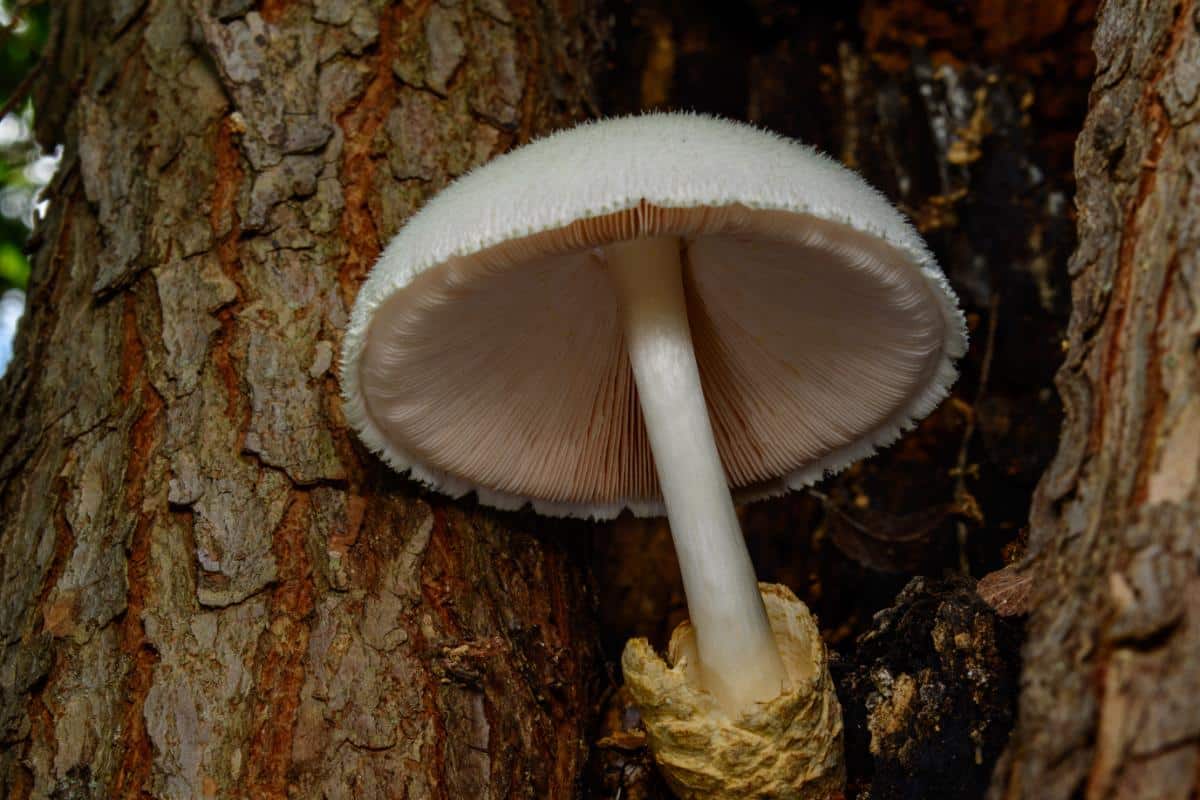
Jump to:
All About The Silky Rosegill Mushroom
The silky rosegill belongs to the family Pluteaceae. Jacob Christian Schaeffer gave this mushroom its scientific name Agaricus bombycinus in 1762. In 1949, mycologist Rolf Singer moved this species to the Volvariella genus.
This species has had many scientific names over the years, including Agaricus bombycinus, Agaricus denudatus, Pluteus bombycinus, Volvaria bombycina, Volvaria flaviceps, and Volvariopsis bombycina. Some sources list multiple varieties of silky rosegill: var. bombycina, var. laviceps, var. microspora, and var. palmicola. Most current guidebooks will have it listed under Volvariella bombycina.
It is known by many different names around the world, including silky rosegill, silky sheath, silky volvariella, silver-silk straw mushroom, and tree mushroom. This is a mushroom that goes by many names!
The genus name Volvariella comes from the Latin word volva, meaning “wrapper” or “a covering.” This name is a reference to the volva at the stem’s base, formed by leftover bits of the membranous universal veil that covers young fruitbodies.
The specific name bombycina comes from the Latin bombycis, meaning “silky.” This shares its Latin root with Bombyx mori, the scientific name of the silkworm.
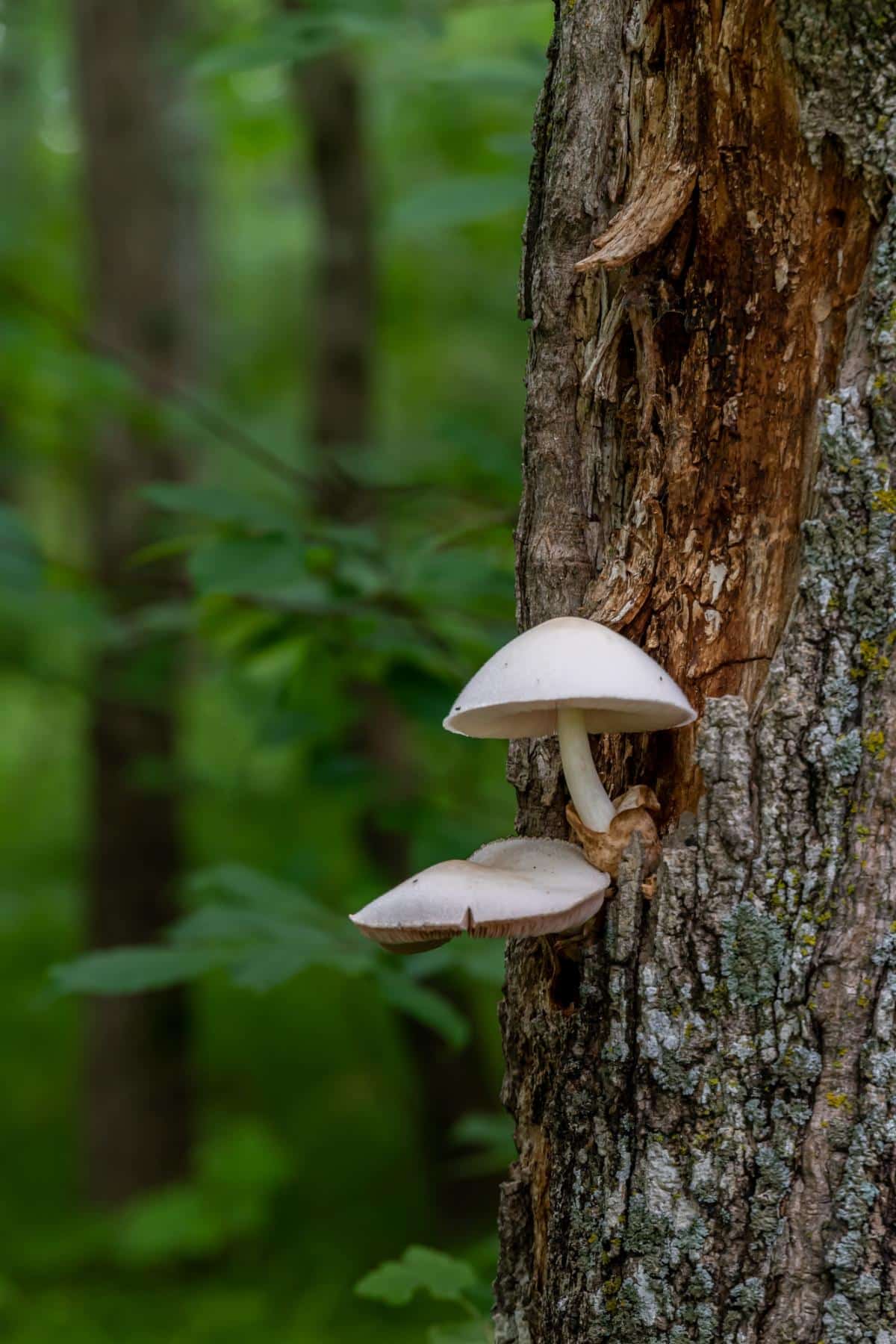
Silky Rosegill Mushroom Identification
Season
Silky rosegill fruits from late spring through fall. It is most common between July and November.
Habitat
The silky rosegill is a saprobic species that feeds on dead organic material, particularly rotting wood. It is most often found on dead wood or decaying stumps. It favors hardwoods, such as beech, elm, maple (sugar, red, and silver varieties), oak, magnolia, and occasionally horse chestnut and poplar. Rarely, it fruits on conifer trees.
The mushroom grows wherever there are aging deciduous trees. They are commonly seen in urban areas with forested parks, old gardens, and graveyards that have old trees. Recently, there have been fewer appearances in urban-adjacent areas due to habitat loss and the removal of decaying wood.
The silky rosegill usually grows several feet above ground on the tree, often very high up. It rarely grows on the lower trunk of a tree. This mushroom typically emerges from tree cavities, knotholes, or wounds. It prefers damaged sections of trees. It often grows from the same location for several years once it gets established.
Silky rosegill mushrooms grow worldwide but are still uncommon. They grow throughout Europe, North America, Asia, the Caribbean, Australia, and South America. In North America, they are most common east of the Rocky Mountains or the Great Plains.
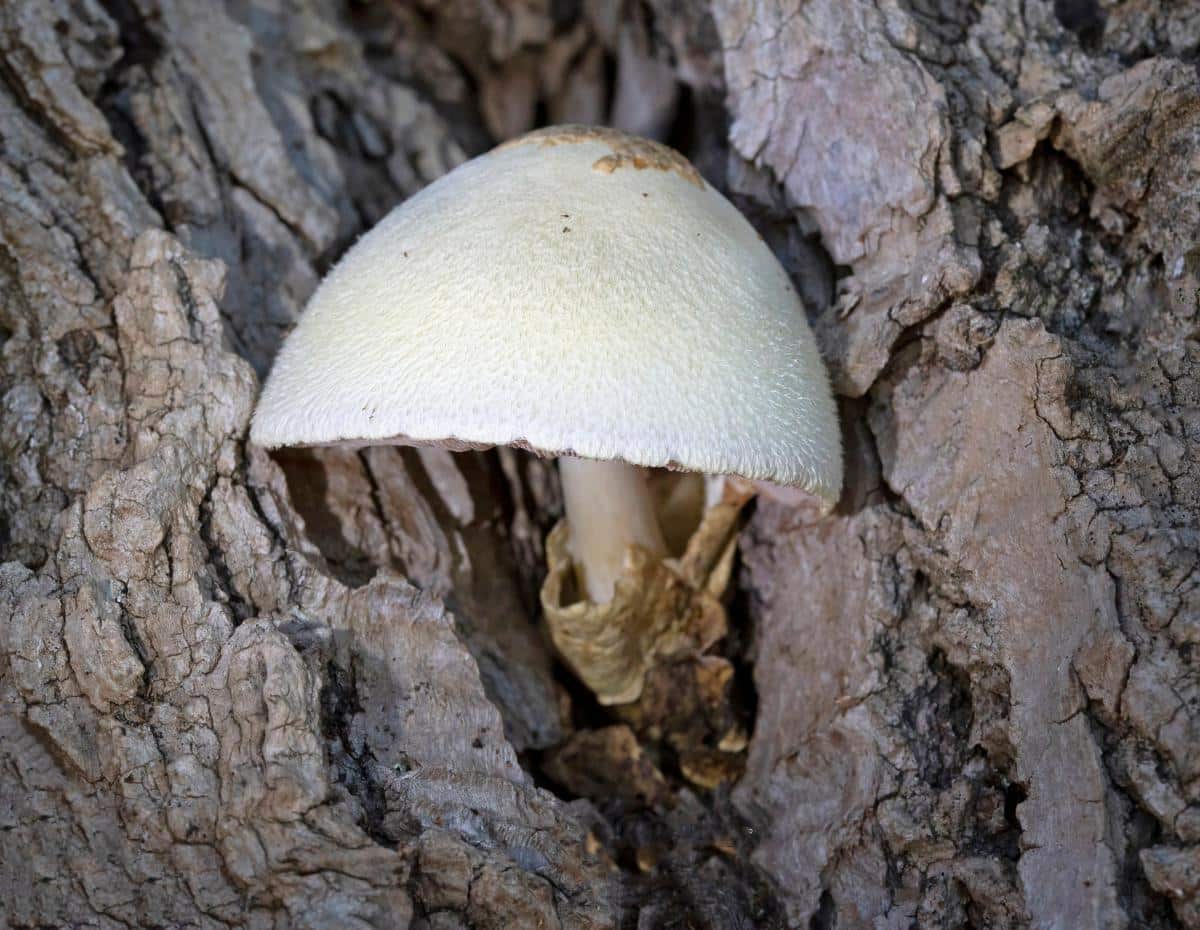
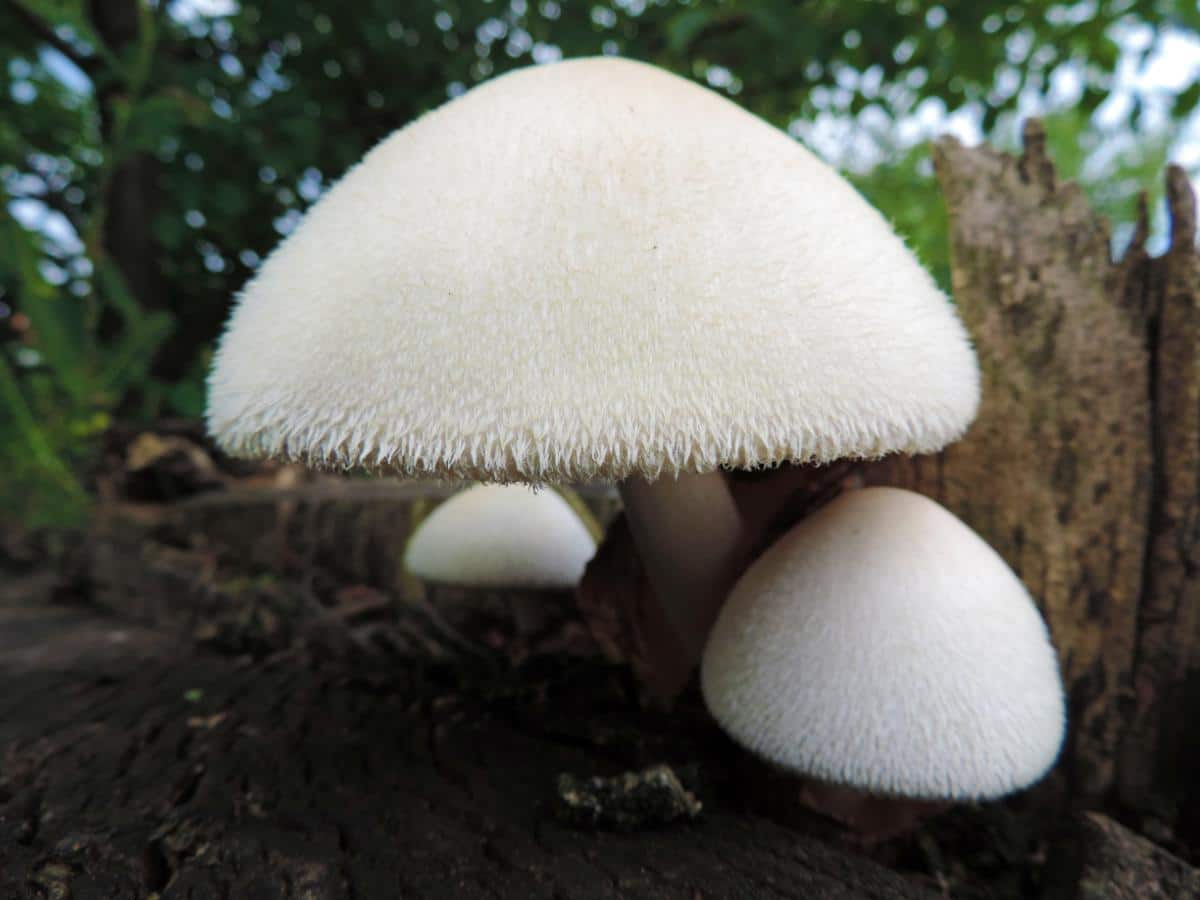
Identification
Cap
When the silky rosegill first emerges, it looks like a weird snowy egg. The mushroom body is enclosed in a white universal veil, which gives it an egg shape. As the mushroom grows, the cap breaks free from the veil. The cap starts out bell-shaped or rounded and then becomes almost flat as it ages. A mature silky rosegill mushroom cap averages 2-8 inches in diameter.
The cap is covered with silky threads that give this mushroom its name. These threads are leftover bits of the universal veil that once enclosed the entire thing. The silken surface looks like fine satin.
Young silky rosegills have a snow-white cap. Often, the center of the cap turns yellowish to brownish shades as it ages. These mushrooms grow very quickly. It may go from egg stage to fully emerged cap in 24-48 hours. It’s a really fun mushroom to watch grow.
Gills
The gills start out white and very crowded. They are not attached to the stem—a significant identification feature. As the mushroom matures, the gills gradually turn pink. When the mushroom is still in its egg stage, the gills are completely covered by the universal veil and can’t be seen.
Stem
The stem is white, 2½-8 inches long, and ½-1¼ inches thick. It has a thicker base and tends to taper upwards. The stem is smooth and curves slightly to keep the cap horizontal while growing from vertical surfaces. The base of the stem has a thick, sack-like volva around it. This is a remnant from the universal veil. This volva starts white and turns to yellowish or dingy brown over time.
The silky rosegill does not have a ring around the stem. Many mushrooms that start with universal veils also have partial veils that leave a fleshy ring around the upper stem. For the silky rosegill mushroom, the lack of this is a key feature.
Flesh and Staining
The mushroom’s flesh is white, thin, and soft throughout. It doesn’t change color from cuts or bruises.
Smell and taste
Silky rose gills have a mild scent like raw potatoes. The taste is mild and plain.
Spore print
The spore print is pinkish to salmon to brownish-pink.
Varieties of Silky Rosegill
- V. bombycina var. flaviceps is different from the main type because it has smaller, bright yellow caps that are up to 1+1⁄2 in wide, and a dirty-white, scaly volva.
- V. bombycina var. microspora has smaller spores, a yellow cap, and a blotchy brown volva.
- V. bombycina var. palmicola also has a yellow cap and small spores. However, you can distinguish it from the other varieties by its widely spaced gills.
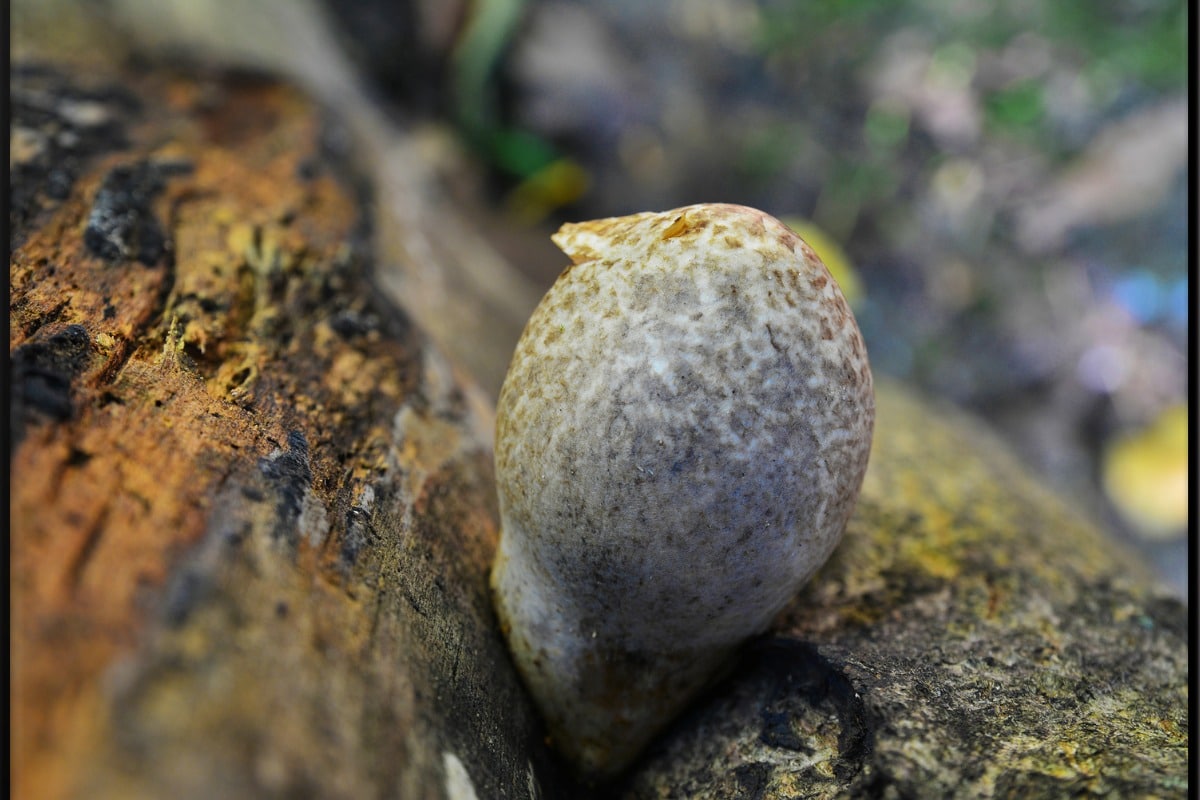
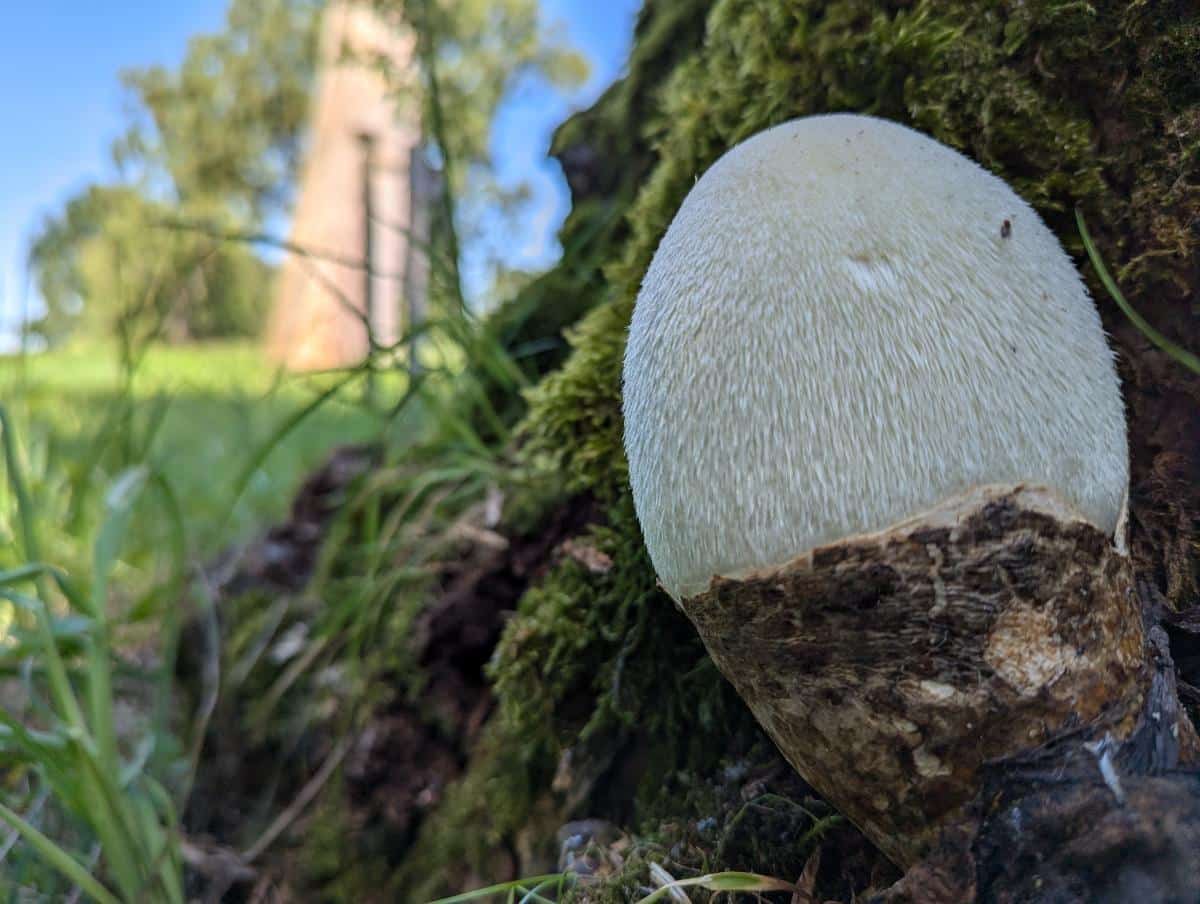
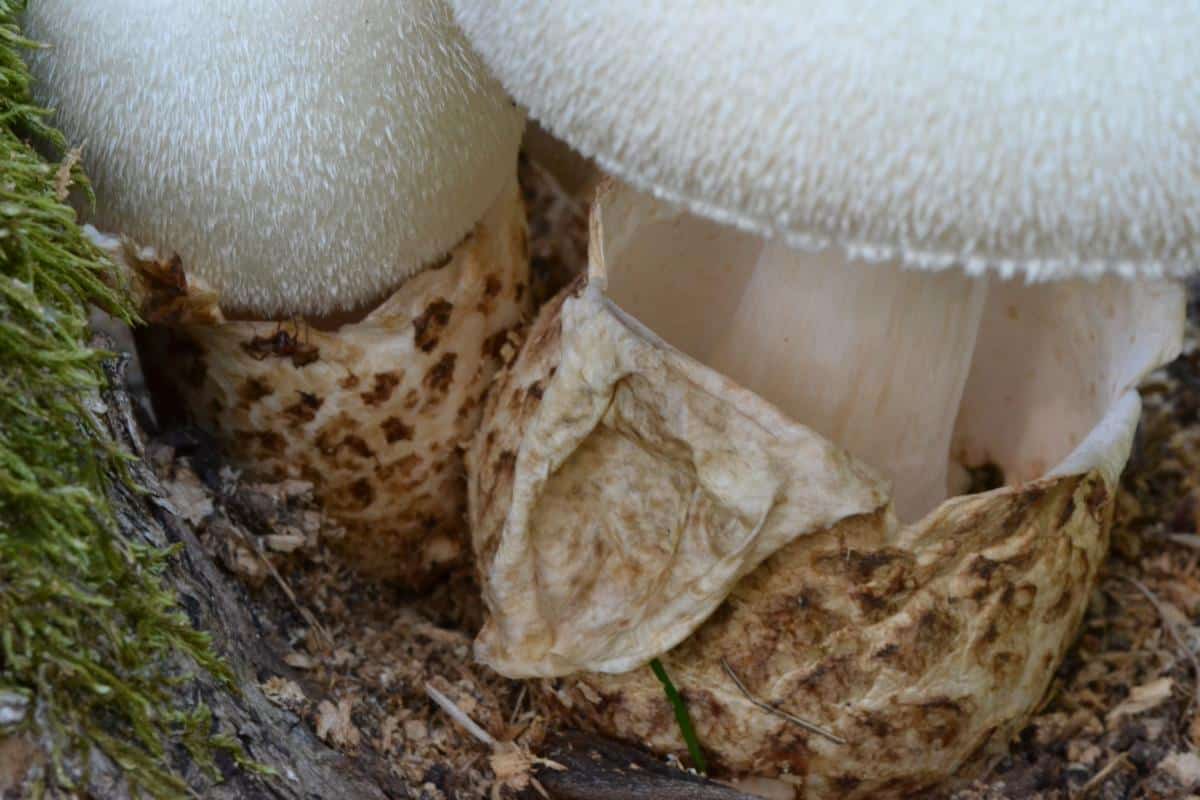
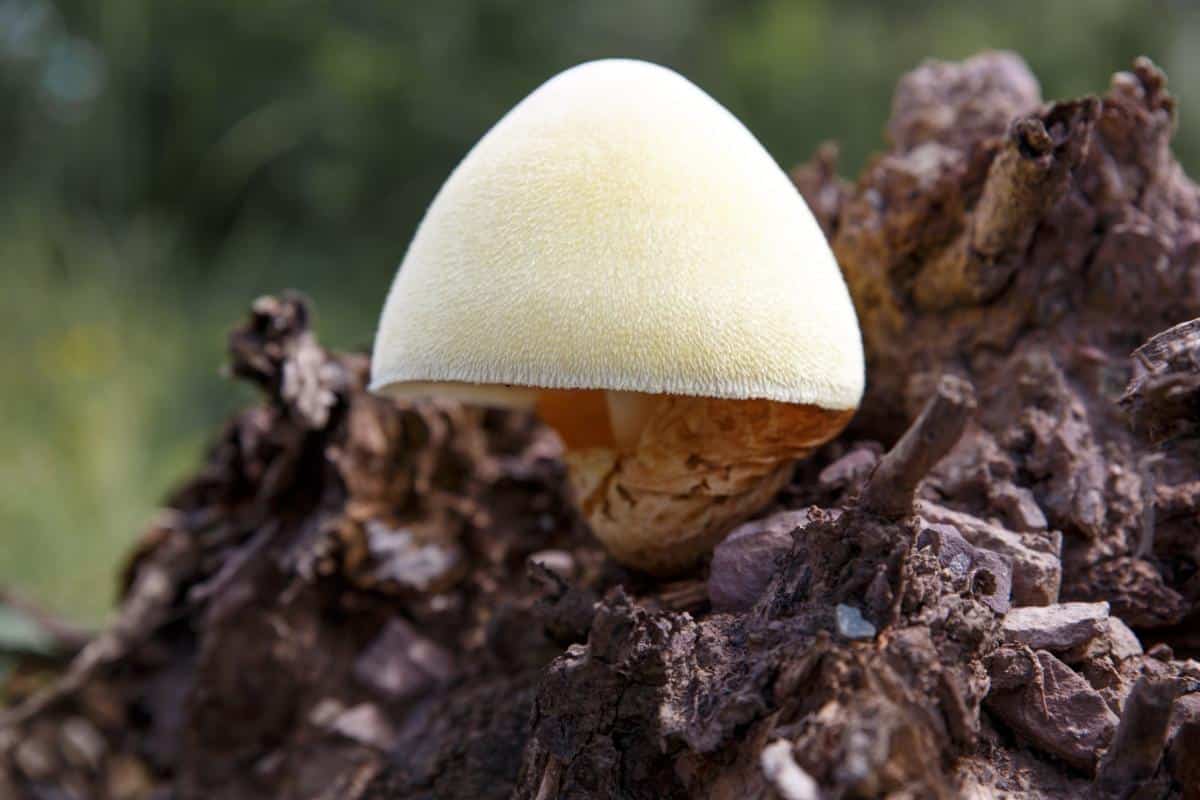
Silky Rosegill Lookalikes
Amanita species
The deadly Amanita species, particularly the Destroying Angels and Death Caps, are the most dangerous risk of confusion with silky rosegill. Both may look similar at first with their white caps and volvas, but there are significant differences. Amanita species grow from the ground or above tree roots. They never grow from decaying wood like silky rosegill does. Young silky rosegill’s gills start out white but turn pink with age, while Amanitas keep their pure white gills throughout their growth.
Most Amanitas also have an annulus (ring) around the upper stem. The silky rosegills do not have this. The volva’s features are different too—silky rosegill has a membranous, flaccid volva that breaks down within days after picking. Amanita volvas are more white and stick closer to the stem base.
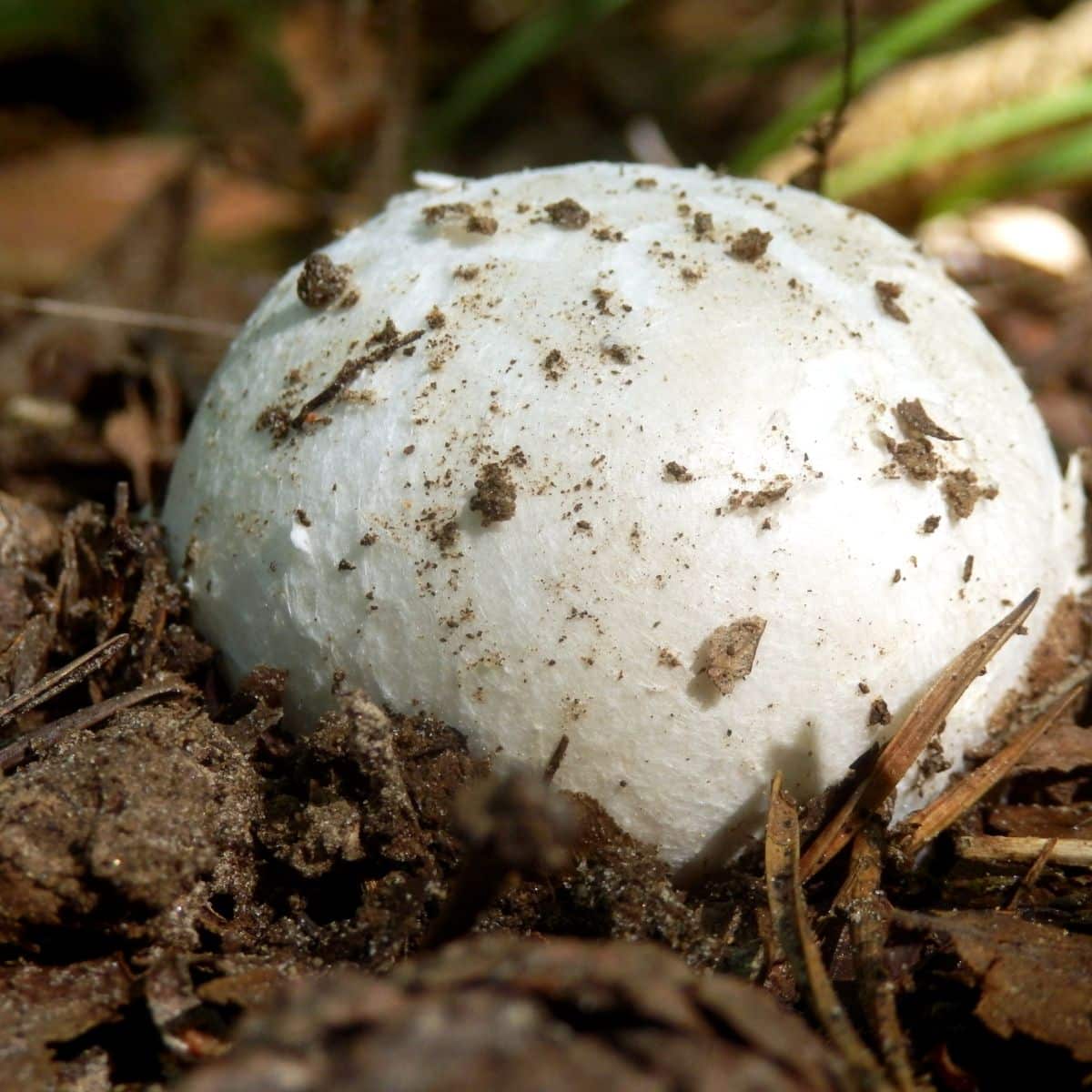
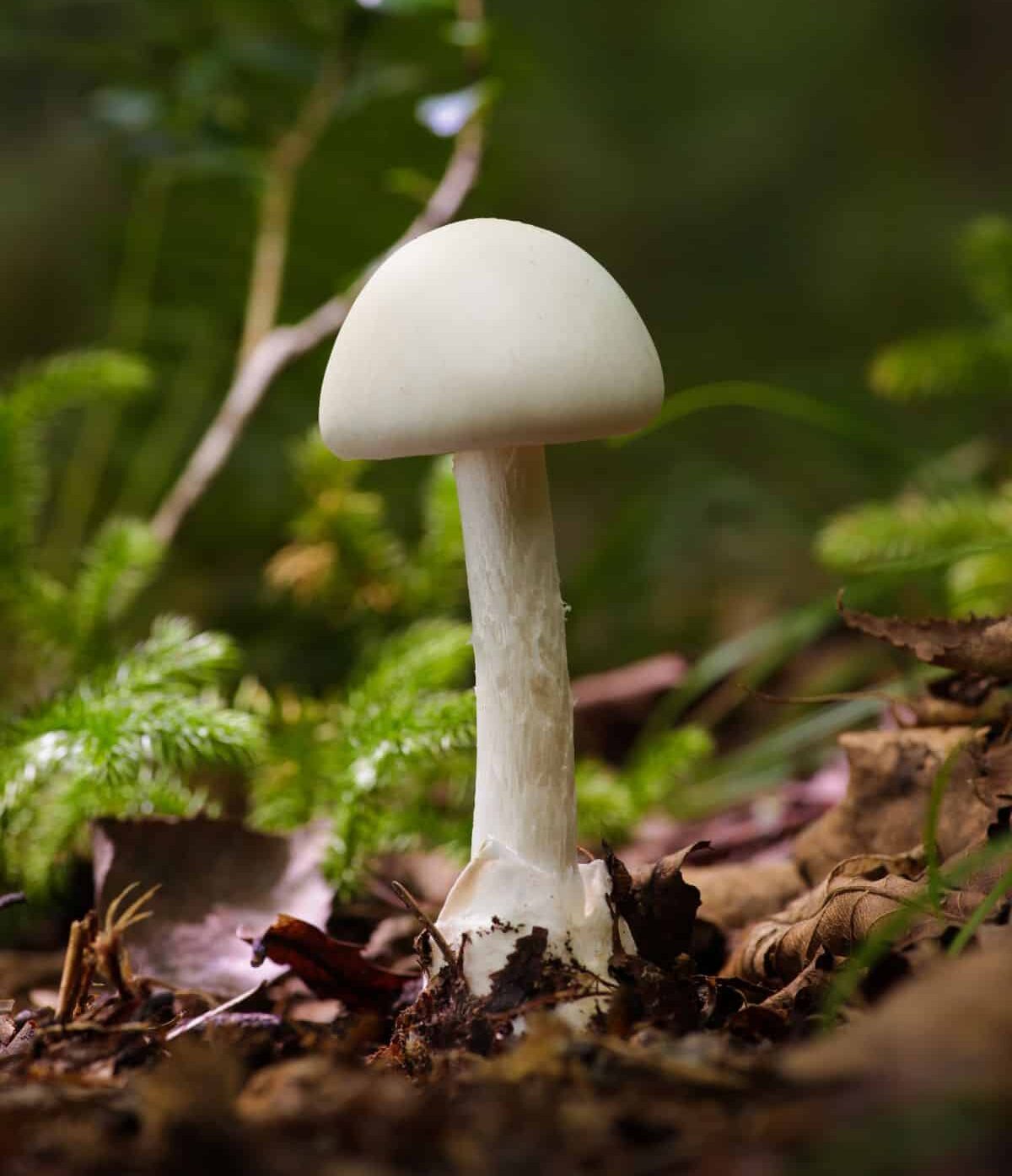
Big Sheath Mushroom (Volvopluteus gloiocephalus)
The big sheath mushroom looks quite similar with a large white umbrella-shaped cap, white stem, and white cup around the base of the stem. There are, however, several key differences. The big sheath grows from the ground, not from wood or trees. Also, the cap of the big sheath is not silky. It often has light streaks of color or thin fibers, but it is not nearly as much as the silky rosegill. Another difference is the cup at the base of the stem. The big sheath’s remains white with age, while the silky rosegill mushroom’s cup turns yellowish or dingy brown.
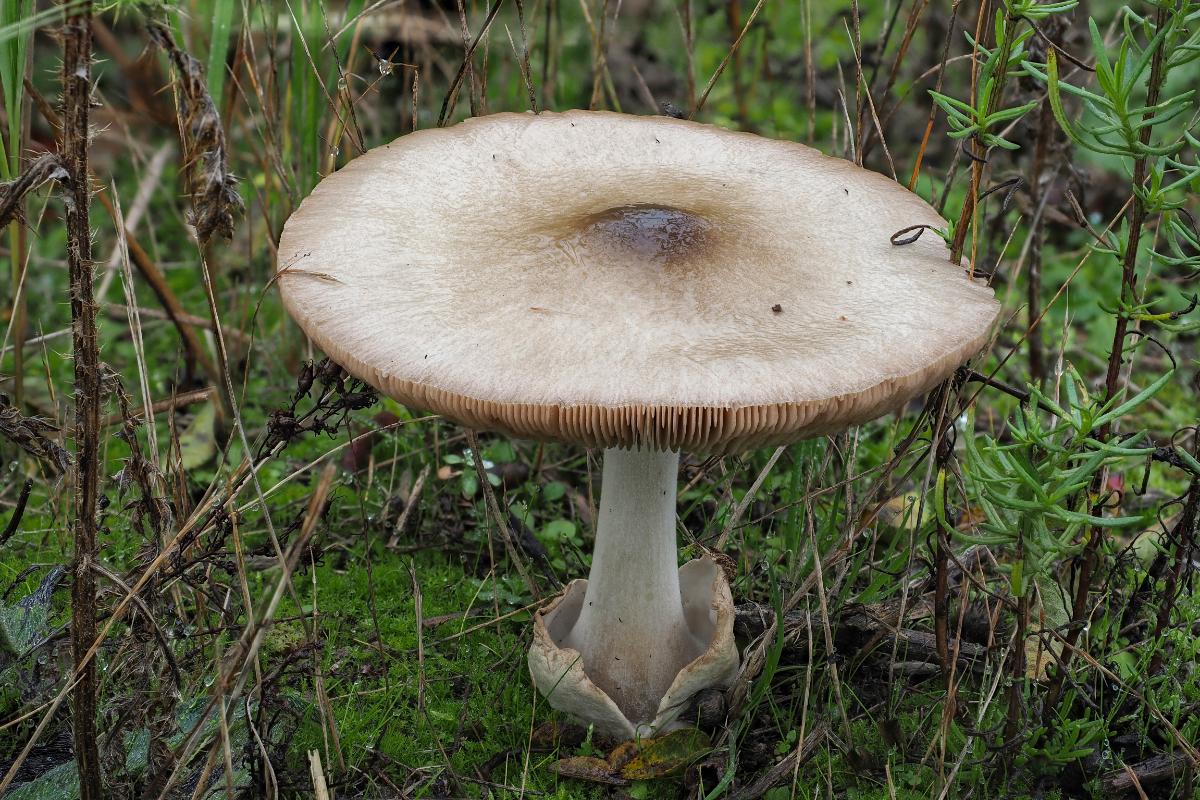
Silky Rosegill Edibility
The silky rosegill mushroom is edible and quite good quality. Opinions on it’s taste range from “excellent,” “tasty,” with a “modest and pleasant flavor”. There are a lot of varying descriptions of the taste and flavor profile of this mushroom.
Some people claim to detect hints of anise and almond, while others describe a faint, radish-like smell and taste. This is primarily because even though it is edible, it isn’t often foraged. Part of the reason is because it is uncommon so the opportunities for trying it are limited.
The mushroom’s texture is tender yet slightly fibrous, similar to the oyster mushroom. This mushroom ranks somewhere in the middle among culinary varieties – neither exceptional nor disappointing.
Do not eat this mushroom raw. The best way to prepare it is simply by sautéing in butter or oil, grilling, or adding it to soups and stews. This mushroom absorbs flavors easily, which makes it perfect for stir-fries and risottos.
The silky rosegill is also great in traditional Asian recipes, such as miso soup, stir-fries, or spicy Thai mushroom soup with coconut milk. Polish and Russian cooks often prepare this mushroom fried with onions alongside potatoes or add it to soups or to bulk up broths.
As with any mushroom, only try a little bit the first time. Then, wait 24-48 hours to see if you have an allergic reaction. This can happen with any mushroom species. There have been a few reports of allergic reactions to the silky rosegill.
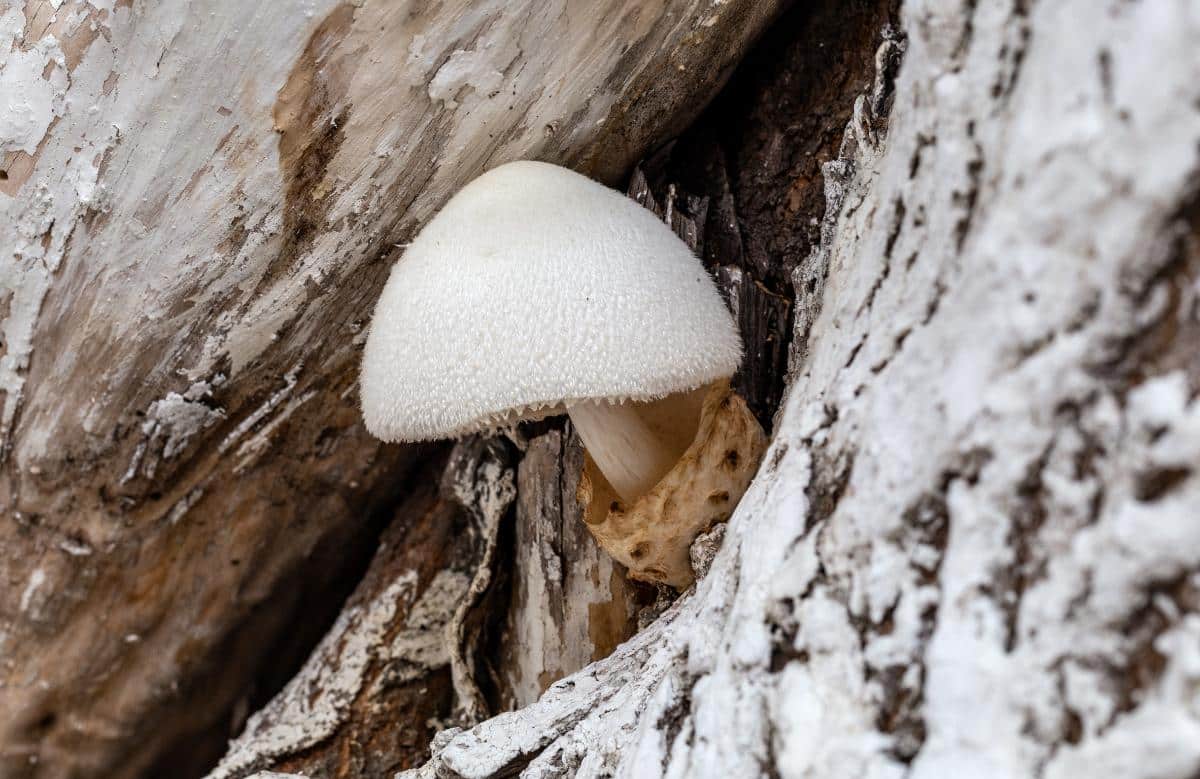
Medicinal Uses For Silky Rosegill Mushroom
Scientists have identified several bioactive compounds in the fruit bodies, mycelium, and culture broth of this mushroom. A breakthrough in understanding this mushroom’s therapeutic benefits came in 2009. Researchers identified a new compound that inhibits the human elastase enzyme, a primary cause of emphysema and rheumatoid arthritis. The mushroom’s extracts also have notable antioxidant activity that neutralizes free radicals and regulates inflammation.
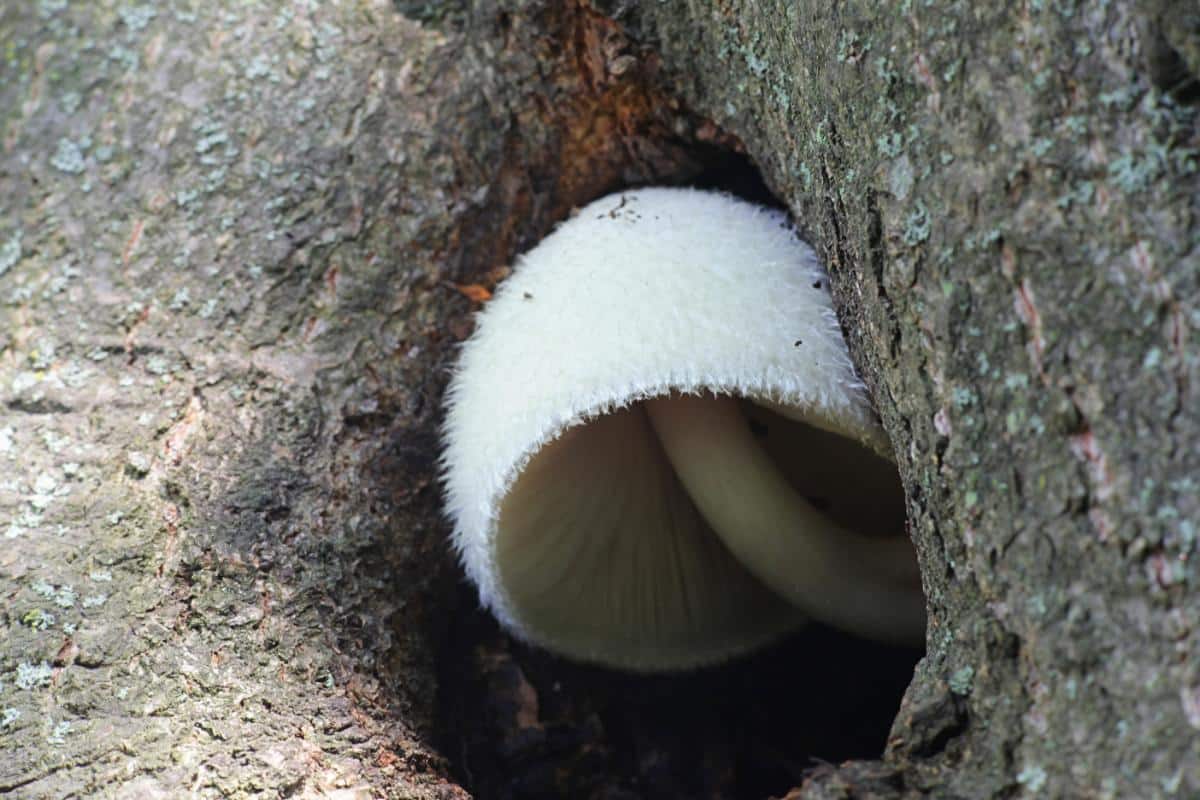
Common Questions About The Silky Rosegill Mushroom
Is the silky rosegill mushroom edible?
Yes, the silky rosegill is edible and tastes good, though it isn’t as prized as other wild edible mushroom species. It does have some very dangerous lookalikes, so forage this one with caution.
How does the silky rosegill differ from the Destroying Angel?
The key difference between the silky rosegill and the destroying angel is their growing habitat. Silky rosegill grows directly from decaying wood on trees, while the Destroying Angel grows from the ground. Additionally, the silky rosegill has pink gills when mature and doesn’t have a ring on the stem, both things the Destroying Angel does have.
Where and when can I find silky rosegill mushrooms?
Look for silky rosegills on hardwood trees like maple, elm, and oak. They often grow from wounds or cavities. They’re most common from late spring through fall, particularly July to October, and prefer warm, humid conditions.
Are there any medicinal uses for the silky rosegill mushroom?
Research has shown that silky rosegill contains compounds with antioxidant and potential immunomodulatory properties. While not as extensively studied as some other medicinal mushrooms, it shows promise for various health applications, though more research is needed.

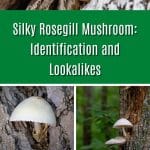
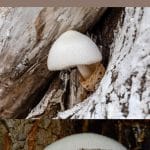
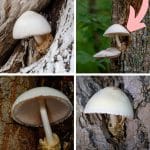
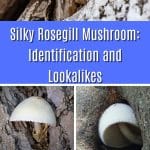
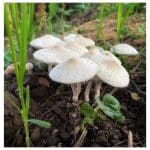
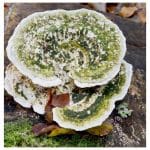
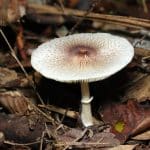
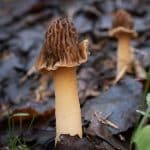
Leave a Reply